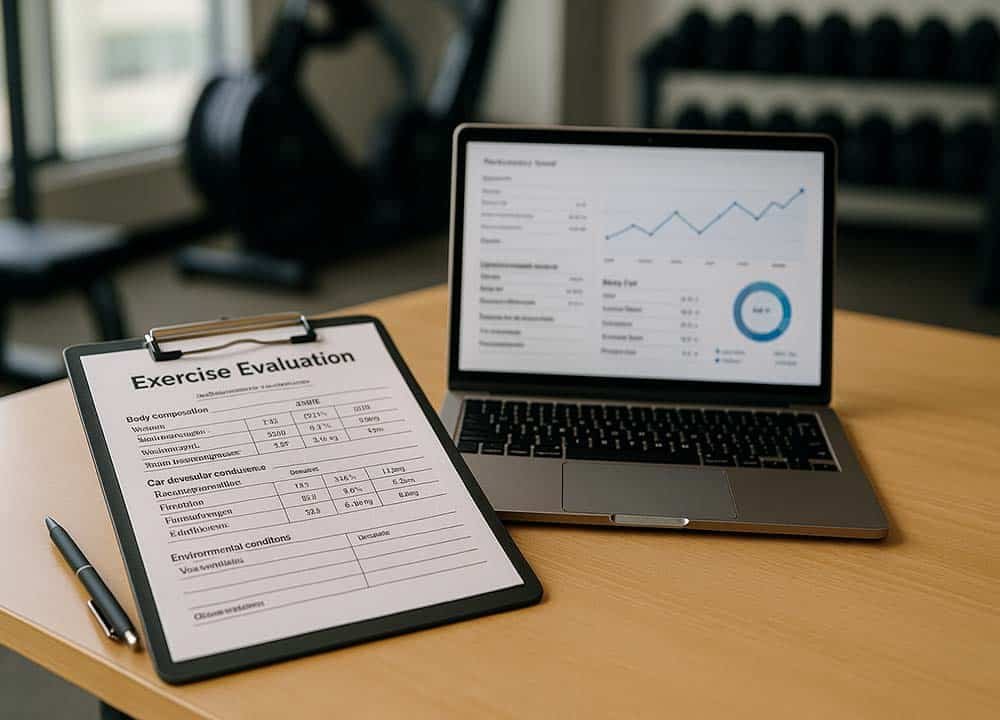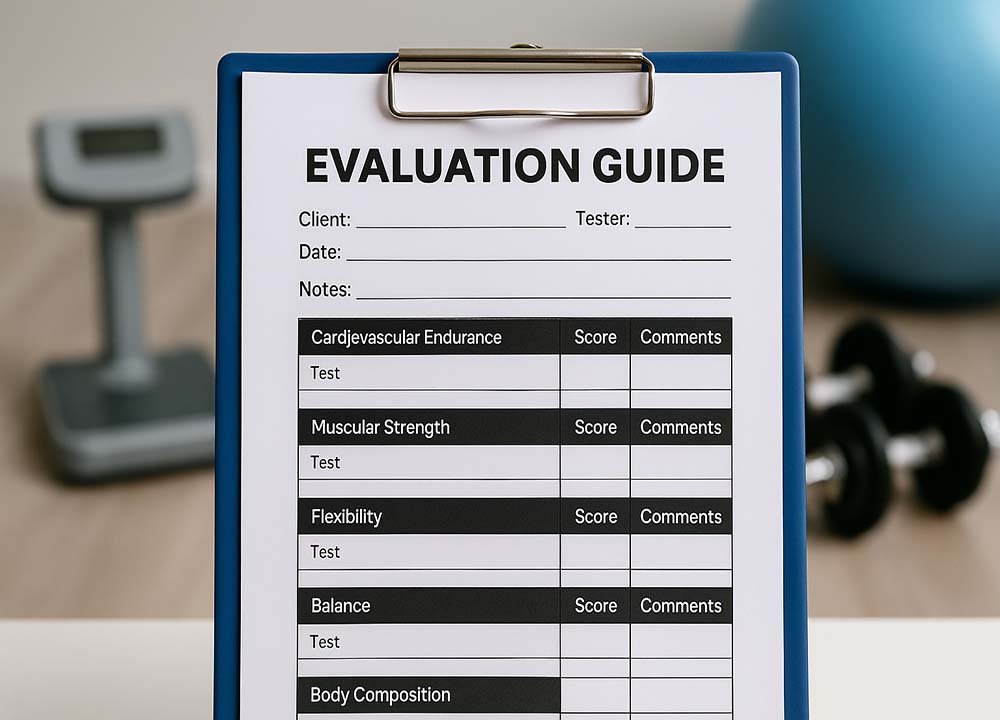Exercise evaluation guide users often wonder what makes a fitness assessment truly effective. The answer lies in precision, structure, and data-driven analysis. The Exercise Evaluation Guide 2025 provides a comprehensive framework for evaluating physical performance, identifying areas of improvement, and tracking long-term progress.
This guide is designed for fitness professionals, coaches, and health experts who aim to elevate training quality through measurable evaluation standards. We’ll explore how to use an exercise evaluation guide template, what exercise evaluation guides contain, and provide exercise evaluation guide examples that align with current evidence-based fitness methodologies. Whether for athletes or general clients, the exercise evaluation guide helps ensure accuracy, accountability, and sustainable performance enhancement.
Purpose and Core Elements of an Exercise Evaluation Guide

An exercise evaluation guide serves as a structured tool for assessing an individual’s physical condition and tracking performance changes over time. In 2025, with the rise of digital tracking platforms and integrated wearables, these guides are more precise than ever.
A professional exercise evaluation guide template includes key metrics such as body composition, cardiovascular endurance, muscular strength, flexibility, and functional mobility. An exercise evaluation guide EEG includes detailed data fields for test results, environmental conditions, and trainer observations ensuring that every assessment is consistent and reliable.
By implementing a standardized exercise evaluation guide, professionals gain a clear baseline for comparing progress over multiple sessions, leading to better program design, injury prevention, and evidence-backed goal setting.
What Exercise Evaluation Guides Contain and How They Work

A well-structured exercise evaluation guide integrates scientific principles to produce accurate and actionable results. Exercise evaluation guides contain what information necessary for developing personalized fitness programs such as test protocols, measurement units, performance grading scales, and progress notes.
For example, exercise evaluation guides EEGs contain what information like VO₂ max readings, heart rate recovery times, and flexibility range scores, enabling trainers to analyze physiological responses efficiently. In 2025, these guides often sync with fitness apps, automatically compiling reports and suggesting training modifications based on data trends.
Ultimately, the exercise evaluation guide ensures objectivity and accountability in every fitness program. It turns raw data into insights helping professionals translate numbers into smarter, safer, and more effective exercise prescriptions.
Exercise Evaluation Guide Examples and Applications

Professional exercise evaluation guide examples highlight how structured assessment methods improve performance tracking. A typical example might include pre- and post-program evaluations, functional movement screenings, and sport-specific agility or strength tests. Each example demonstrates how the exercise evaluation guide captures meaningful changes across multiple fitness domains.
Most exercise evaluation guides EEGs list parameters like endurance time, body composition percentage, and flexibility index, ensuring no key metric is overlooked. Trainers can reference these benchmarks to adjust intensity, recovery, and progression rates.
Whether assessing a professional athlete or a general fitness client, the exercise evaluation guide provides clarity, helping coaches make data-driven adjustments that lead to measurable, long-term improvement in physical performance.
Building an Effective Exercise Evaluation Guide Template

Creating an exercise evaluation guide template requires defining the goals, assessment types, and data recording standards. Professionals typically include five key categories: cardiovascular endurance, muscular strength, flexibility, balance, and body composition.
An exercise evaluation guide EEG includes sections for tester credentials, environmental notes, and pre-test conditions to maintain consistency. The most effective exercise evaluation guides EEGs contain what information relevant to client goals — whether improving athletic performance, rehabilitation tracking, or general wellness.
By following a well-designed exercise evaluation guide, coaches can align testing with international standards like ACSM or NASM guidelines. This ensures evaluations remain credible, replicable, and valuable for professional reporting or client progress reviews.
Conclusion
The Exercise Evaluation Guide 2025 represents a new era of structured, evidence-based assessment. As fitness becomes more data-driven, these guides empower professionals to combine science with personalization, resulting in safer and more efficient training.
By using a standardized exercise evaluation guide template, integrating modern tools, and understanding exercise evaluation guide examples, professionals can ensure consistent, accurate, and high-quality client assessments.
Ultimately, the exercise evaluation guide is not just a document, it’s a professional instrument that bridges the gap between measurable data and human performance.







